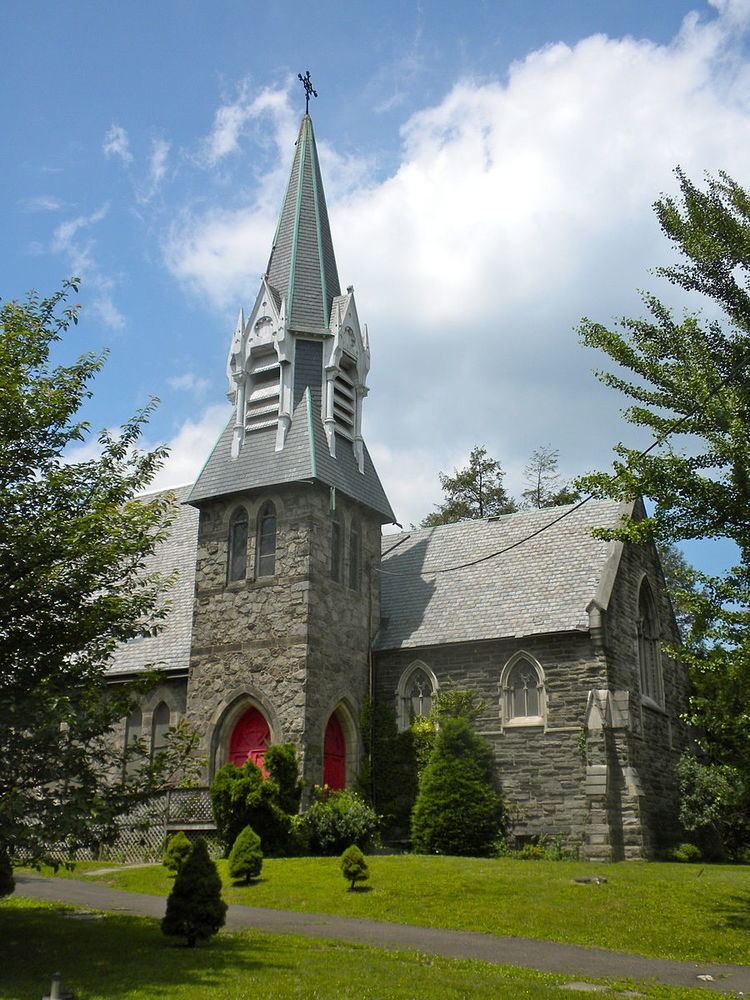 | ||
G. W. & W. D. Hewitt was a prominent architectural firm in the eastern United States at the turn of the twentieth century. It was founded in Philadelphia in 1878, by brothers George Wattson Hewitt (1841–1916) and William Dempster Hewitt (1847–1924), both members of the American Institute of Architects. The firm specialized in churches, hotels and palatial residences, especially crenelated mansions such as Maybrook (1881), Druim Moir (1885–86) and Boldt Castle (1900–04). The last was built for George C. Boldt, owner of Philadelphia's Bellevue-Stratford Hotel (1902–04), G.W. & W.D. Hewitt's most well-known building.
Contents
Career
George Hewitt worked in the office of John Notman, and became an expert on English ecclesiastical architecture. In 1867, he formed a partnership with John Fraser and Frank Furness, which lasted until 1871. The younger men formed their own firm, Furness & Hewitt, whose most notable building was the Pennsylvania Academy of the Fine Arts (1871–76). Louis Sullivan worked briefly as a draftsman for Furness & Hewitt (June - November 1873), and left descriptions of the Hewitt brothers:
George Hewitt [was] a slender, moustached person, pale and reserved, who seldom relaxed from pose. It was he who did the Victorian Gothic in its pantalettes, when a church building or something of the sort was on the board. With precision, as though he held his elements by pincers, he worked out the decorous sublimities of inanity, as per the English current magazines and other English sources. He was a clean draftsman, and believed implicitly that all that was good was English. Louis regarded him with admiration as a draftsman, and with mild contempt as a man who kept his nose in books.
But George Hewitt had a younger brother named John [sic], and John was foreman of the shop. He was a husky, smooth-faced fellow under thirty. Every feature in his clean cut, rather elongated face, bespoke intelligence and kindness, in fact a big heart. He had taken a fancy to Louis from the start. He was the 'practical man' and Louis ran to him for advice whenever he found himself in a tight place. John was patience itself and made everything clear with dainty sketches and explanatory notes. These drawings were beautiful and Louis frankly told him so. He begged John to teach him 'touch' and how to make such sketches, and especially how to 'indicate' so crisply. This John did. In fact, it was not long before he made of Louis a draftsman of the Upper crust, and Louis's heart went out to lovable John in sheer gratitude.
Writing a half century after the fact, Sullivan misremembered William Hewitt's name (there was no John Hewitt). Furness & Hewitt continued until 1875, and George opened his own firm, making his brother William a partner in 1878.
In the early 1880s, Henry H. Houston, a director of the Pennsylvania Railroad, began developing 3,000 acres (12 km2) in the western Chestnut Hill section of Philadelphia. The Hewitt brothers did the planning for the upper-class suburb and designed the principal buildings, including a resort hotel, the Wissahickon Inn (1883–84) (now Chestnut Hill Academy); the first clubhouse for the Philadelphia Cricket Club (1883–84, burned 1909); Houston's own mansion, Druim Moir (1886); and St. Martin-in-the-Fields Episcopal Church (1888). More than 100 Chestnut Hill houses were designed by the Hewitts.
Horace Trumbauer did his apprenticeship with the firm. Phineas Paist worked for the firm, and became a partner in it. Following George's 1907 retirement, the firm continued as Hewitt, Stevens & Paist.
